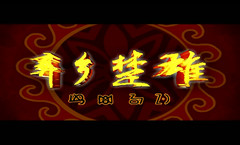Dancing through time
By Sun Ye ( China Daily )
Updated: 2013-11-13
Dancing in public squares is common in China when the weather is warm. Sun Ye explores the rich cultural legacies of the traditional dances that have been part of community life for centuries.
With a rattlesnake whip in one hand, use the other to give yourself a tap on the shoulder, then your elbow, wrist, waist, kneecap and instep until you have tapped each joint in your body.
It looks like the perfect stretching exercise. Except you are holding a whip decorated with six little coins that give a jaunty jingle with each "swish".
It's no surprise this dance has become a popular daily sight at People's Park in Dali, Yunnan province.
The routine is not solely for exercise. The rattlesnake dance, a signature dance of the Bai ethnic group in the area, is an emotional expression of culture.
"Listen to the coins, it's how we welcome wealth and happiness. It's our tradition to dance the rattlesnake dance at major festivals and celebrations," explains Yang Zhenyi, 36, who in October led her group of amateur dancers from Yunnan to participate in the Galaxy Awards competition that honors community art in Qingdao, Shandong province.

"The dance at the square we practice daily is easier than the original ones, but it's the same free-spirited and engaging dance that just makes you happier and happier when you tap to the tune," says Yang.
"I've only seen the full set of dances in the village where my grandparents lived, but I love it."
Yang was raised in the city and is a clerk at the local art museum.
Dancing in the square is best accompanied by impromptu Bai ethnic tunes sung a cappella. "Listen to it, we dance to say how lovely we Yunnan 'golden flower' girls are," Yang says.
Just like the whip dance, the Kazakh traditional dance Karajurha tells the story of how men ride horses and wrestle and how women sew and children play. This traditional dance has also evolved into an engaging square dance and a morning exercise at schools.
"We're used to dancing it whenever there is a wedding or happy get- together," says Ersen Heyzat, from the Altay prefecture of the Xinjiang Uygur autonomous region.
He led his group of dance enthusiasts to the Galaxy Awards. He has also designed a set of school exercises based on Karajurha.
"When the tribe still lived on the grassland, it was danced while on a horse. Therefore it's the same tempo as the horses prance," he says.
"It's easy as long as you know how to shrug, as most moves are in the upper body," says Heyzat. "For the Karajurha square dance, there is nothing you can't learn in a minute and no standard you can't match."
"That's the point of square dancing. It's easy."
In Usu in Xinjiang, young and old participate in ethnic square dancing every evening in the summer in several plazas around the city.
"We don't wear an owl's feather or ultra-long sleeves (the traditional dance clothes) for daily square dancing," Heyzat says. "But the movements still reflect our moods, that we are very happy with our lives."
Square dancing can be witnessed across the country in the morning and early evening in warm weather, but it is not always welcome.
China News Service reported in August that a group of Chinese immigrants in New York were dancing in public with a stereo that was so loud that it attracted the attention of police. Beijing Youth Daily reported a case in Shandong province where a man fired a gun and unleashed his dogs to dispel a dance group who danced late into the night in early November.
But square dances, especially those with strong cultural ties, are worthy of public appreciation.
"It dates back to the traditional folk dances, it's a natural invention," says Ming Wenjun, vice-president of Beijing Dance Academy. Ming is a specialist in folk dance research and was on the judging panel of the Galaxy Awards.
"They start as a ceremony related to the group's belief, cultural lore, and are part of educating the group on manners and behavior," Ming says.
"These functions of the dances weaken with urbanization, but the dances remain a very important part of our culture."
Square dancing cannot be properly categorized because it is a mixture of styles and themes. It's engaging, entertaining and distinctly characteristic of one's cultural upbringing.
"(In the Galaxy Awards) the square dances are representative of a group's cultural identity," Ming says. "You see a soft whip, or a longevity drum, or an umbrella prop, you immediately know the dancer's hometown."
"The square dance is fun and easy for the dancers themselves. People become very invested in it," Ming says.
And most importantly, the dance brings the dancers knowledge of themselves. "The moves are the ritual that gives us Chinese the sense of order and human relations," Ming says. "Questions of who we are, and why we Chinese cling to our home, are answered here."
Contact the writer at sunye@chinadaily.com.cn.
|
Amateur dancers participate in a square dance competition at the People's Square in Rizhao, Shandong province. Chen Weifeng / for China Daily |
|
Women, mostly retirees, stay fit by dancing at an open space in Bozhou, Anhui province. Zhang Yanlin / for China Daily |
|
Dancers from Yunnan province perform at the Galaxy Awards competition that honors community art in Qingdao, Shandong province. Provided to China Daily |
(China Daily 11/13/2013 page20)




